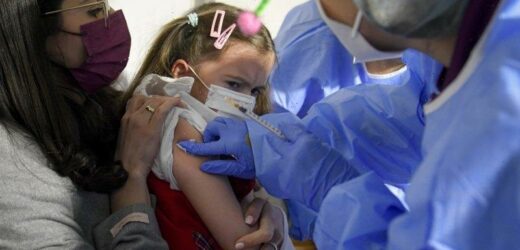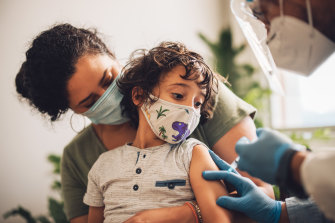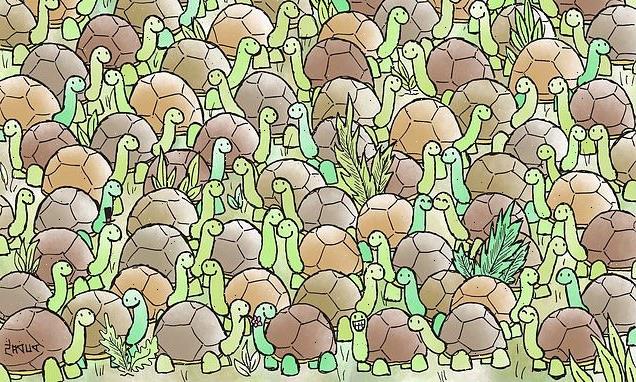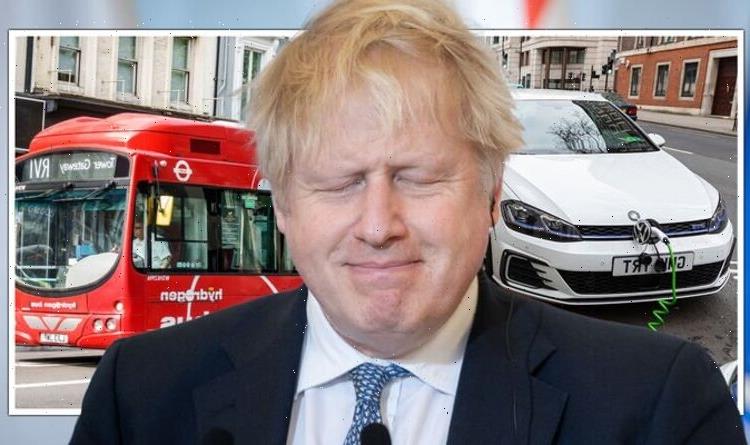For our free coronavirus pandemic coverage, learn more here.
The number of Victorian primary-aged children getting vaccinated has plummeted as experts warn the less harmful Omicron wave may have fuelled parents’ complacency.
Despite a surge in early COVID-19 immunisation bookings for children aged five to 11, fewer than 750 children were vaccinated at state-run hubs on Saturday – a decline of about 85 per cent from January 19, the first available day for data, when 5100 received a shot.
Experts say very young children are far less likely to be hospitalised with coronavirus if they have been vaccinated. Credit:iStock
Experts have attributed the steep decrease to a range of factors, including thousands of children being infected during the Omicron wave and the changing perception of disease severity, with young people more likely to experience mild illness and recover quickly once infected.
While some experts are not surprised at the pace at which the vaccination uptake has slowed, given the initial uptake, others say they did not expect the rates to stall so quickly.
“People are less worried about acute illness in little children and I guess most of us would still argue that no infection is still better than being infected,” said Catherine Bennett, Deakin University chair in epidemiology.
As Victoria’s daily COVID-19 cases dipped below 5000 on Sunday for the first time since December 29, Professor Bennett also called for the removal of mandatory masks at schools where infection rates were low.
“It’s important parents have a good sense of what the local risk is,” Professor Bennett said. “Do we need masks everywhere? Probably not across all schools but we need to have it strongly recommended based on what’s going on in the local community of each school.”
Paediatrician and epidemiologist Fiona Russell agreed parents’ willingness to have children vaccinated was likely dampened as many experienced mild illness, but she said a small number ended up in hospital with severe disease “and you don’t want your child to be that statistic”.
“Data from Denmark shows that rates of hospitalisations are roughly half that in those children who are fully vaccinated compared to those unvaccinated,” Professor Russell said.
“We don’t want to be in the situation where a more evasive variant pops up and we only have half of children vaccinated. It’s also an insurance policy for children in the future.”
Margie Danchin, an immunisation researcher at the Murdoch Children’s Research Institute and paediatrician at the Royal Children’s Hospital, said parents needed to be reassured about the safety of mRNA vaccines.
“The initial response before school started was strong … but I didn’t expect it to slow so quickly,” Associate Professor Danchin said.
Australian Medical Association Victorian president Roderick McRae said older children were more likely to get immunised against COVID-19, given the barriers they could have faced for entering venues, attending on-site university classes and working a part-time job after school.
He added the high rates of infection among the Victorian community during summer, when daily cases peaked at 51,000, may have prompted parents to delay their children’s COVID-19 vaccinations.
About 20 per cent of Victoria’s 47,000 active cases are among children aged between zero and nine, and 22 per cent among those aged between 10 and 19, according to the latest figures.
Fifty-four per cent of Victorian children aged five to 11 have received one dose of a COVID-19 vaccine, compared to 93.8 per cent of people aged over 12 receiving two doses, and 55.2 per cent being triple-jabbed.
About 49 per cent of youngsters have had a first dose nationally, with the rate dipping to 42 per cent in Queensland and 46 per cent in NSW.
Victorian Health Minister Martin Foley said the uptake of vaccines in the five to 11 age group had been faster than almost anywhere else in the world.
“While more than half of all children aged five to 11 have had their first dose – and have done so faster than almost anywhere else in the world – there is still more work to do,” Mr Foley said.
The head of the COVID-19 vaccination taskforce, Lieutenant-General John Frewen, conceded there was “some complacency coming in” for the children’s program and boosters.
However, he said the rollout for five- to 11-year-olds across the country was still faster than the start of the 12- to 15-year-old program, and it was ahead of the children’s program in the US, Israel and Germany.
The US started its child vaccination program in November and 32 per cent of its five- to 11-year-olds have had at least one dose. Germany started in December and 20 per cent have had at least one dose.
National Centre for Immunisation Research and Surveillance clinical research associate director Nick Wood said some parents had also deferred vaccination after their child’s infection, with the current advice to wait four to six weeks after having the virus.
“When the rollout began on January 10 there was a rush and now families are back at school the logistics of getting to clinics is more difficult. What we are seeing is very similar to the United States, where initial demand dropped quickly.”
Victorian Principals Association president Andrew Dalgleish said he would support mandatory mask rules being scrapped as soon as it was safe to do so, saying facial expressions and body language were “absolutely critical” with young children.
He said he was aware, from discussions with the Department of Education, that there had been concerns that child vaccination rates “had not been happening at the rate they would have liked”.
The Morning Edition newsletter is our guide to the day’s most important and interesting stories, analysis and insights. Sign up here.
Most Viewed in Politics
From our partners
Source: Read Full Article



